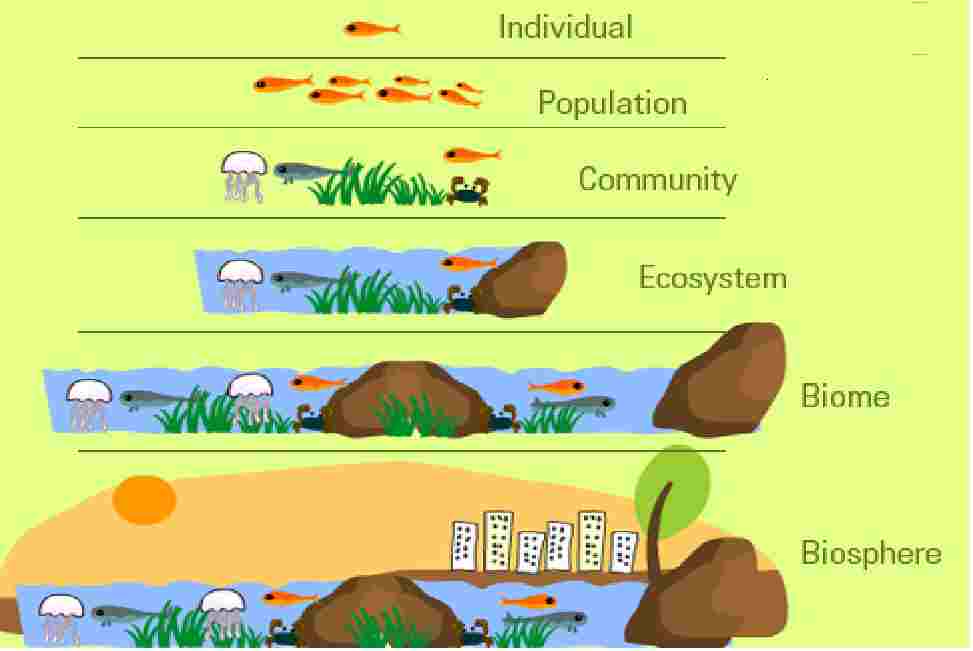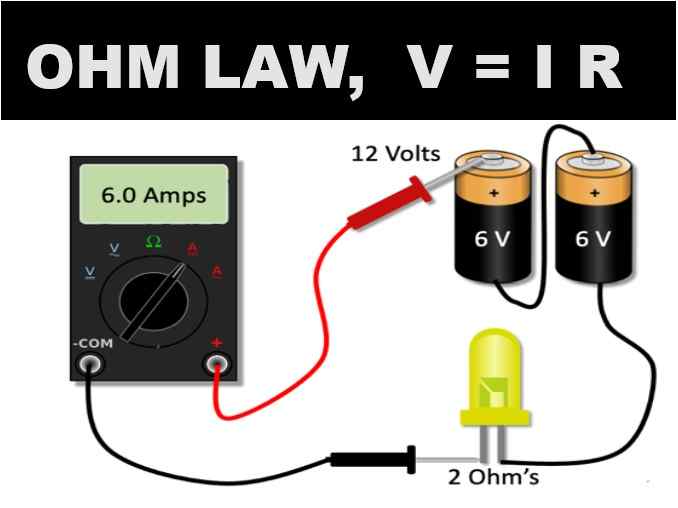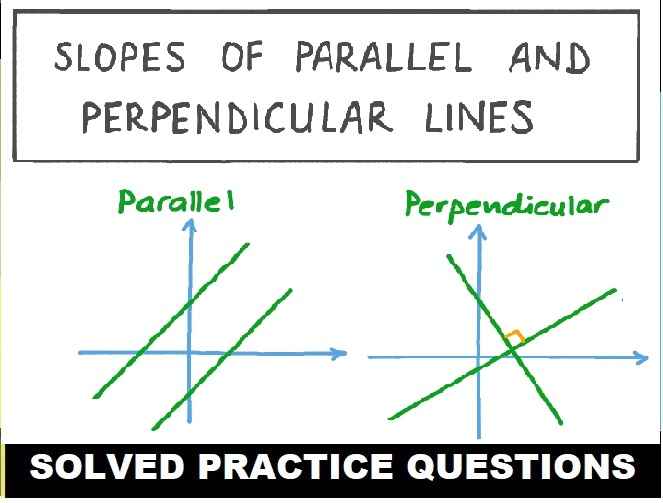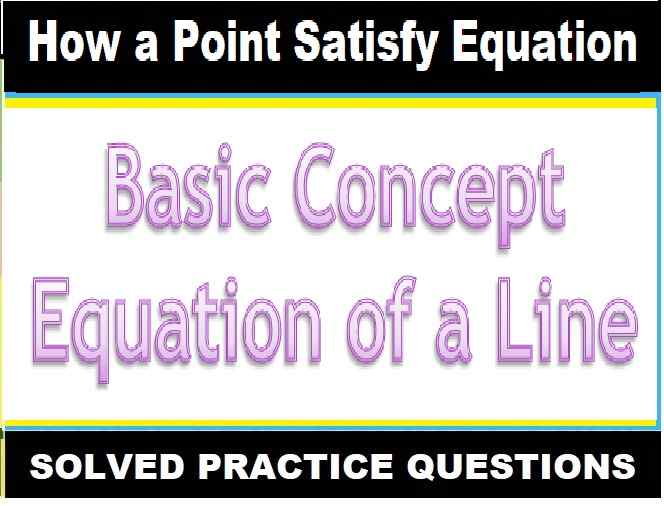Organism and Population MCQs Type Questions with Answer for ISC Class 12 Biology. These MCQs / Objective Type Questions is based on latest reduced syllabus according 2021-22 session on bifurcated pattern. Main motto of MCQ Type Question is cracking the next upcoming Sem-2 exam of council. Visit official website CISCE for detail information about ISC Class-12 Biology.
ISC Class 12 Organism and Population MCQs Type Questions with Answer

| Board | ISC |
| Class | 12th (XII) |
| Subject | Biology |
| Chapter | Organism and Population |
| Syllabus | on bifurcated syllabus (after reduction) |
| Session | 2021-22 |
| Bifurcated | Sem-2 |
| Topic | MCQs / Objective Type Question |
ISC Organism and Population MCQs Questions with Answers for Class-12 Biology
Question 1: For human population, the age pyramids generally show age distribution of
(a) Only males
(b) Only females
(c) Of males and females
(d) None of the above
Answer : (c) Of males and females
Question 2: Niche overlap is:
(a) Mutualism between two species
(b) Active cooperation between two species
(c) Tjvo different parasites on same food
(d) Sharing resources between two species
Answer : (d) Sharing resources between two species
Question 3: Animals undergo inactive stage during winters. It is called :
(a) Acclimatisation
(b) Hibernation
(c) Aestivation
(d) Adapatation
Answer : (b) Hibernation
Question 4: Praying mantis is a good example of:
(a) Camouflage
(b) Mullarian mimicry
(c) Warning colouration
(d) Social insect
Answer : (a) Camouflage
Question 5: Which of the following would necessarily decrease the density of a population in a given habitat?
(a) Natality > mortality
(b) Immigration > emigration
(c) Mortality and emigration
(d) Natality and immigration
Answer : (c) Mortality and emigration
Question 6: What parameters are used for tiger census in our country’s national parks and sanctuaries? [NCERT Exemplar]
(a) Pug marks only
(b) Pug marks and faecal pellets
(c) Faecal pellets only
(d) Actual head counts
Answer : (b) Pug marks and faecal pellets
Question 7: The shifting of an organism temporarily from the stressful habitat to a more hospitable area and return when stressful period is over is called
(a) Suspend
(b) Migrate
(c) Hibernation
(d) Aestivation
Answer : (b) Migrate
Question 8: Ozone protects biosphere from high energetic:
(a) Infra-red rays
(b) Ultraviolet rays
(c) X-rays
(d) gamma rays
Answer : (b) Ultraviolet rays
Question 9: Winter sleep is also called as
(a) Hibernation
(b) Suspend
(c) Migrate
(d) Aestivation
Answer : (a) Hibernation
Question 10: Mycorrhiza is an example to:
(a) Decomposers
(b) Endoparasitism
(c) Symbiotic relationship
(d) Ectoparasitism
Answer : (c) Symbiotic relationship
Question 11: Autecology is the
(a) Relation of an individual to its environment
(b) Relation of a community to its environment
(c) Relation of a biome to its environment
(d) Relation of a population to its environment
Answer : (a) Relation of an individual to its environment
Question 12: To get pollinated by a bee, the Mediterranean Orchid, Ophrys, employs:
(a) Sexual deceit
(b) Pseudo-copulation
(c) Reward in the form of Nectar
(d) Place for laying eggs
Answer : (a) Sexual deceit
Question 13: It natality is balanced by mortality in a population at a given time, there will be a/an
(a) decrease in the population size
(b) increase in the population size
(c) zero population growth
(d) population explosion
Answer : (c) zero population growth
Question 14: What are the key elements that lead to so much variations in the physical and chemical conditions of different habitats?
(a) Temperature and water
(b) Light and soil
(c) Only temperature
(d) Temperature, water, light and soil
Answer : (d) Temperature, water, light and soil
Question 15: A majority of organisms which are restricted to narrow range of temperature are called as
(a) stenothermal
(b) endothermal
(c) ectothermal
(d) eurythermal
Answer : (a) stenothermal
Question 16: Mycorrhiza is an example of
(a) ectoparasitism
(b) mutualism
(c) endoparasitism
(d) predation
Answer : (b) mutualism
Question 17: Organisms that are restricted to a narrow range of salinity, are called
(a) ectohaline
(b) osmoconformer
(c) euryhaline
(d) stenohaline
Answer : (d) stenohaline
Question 18: Salt concentration (Salinity) of the sea measured in parts per thousand is
(a) 30 – 35
(b) 0 – 5
(c) 30 – 70
(d) 10 – 15
Answer : (a) 30 – 35
Question 19: A group of populations of two or more species occupying the same geographical area during a particular time is called
(a) Community
(b) Interaction
(c) Commensalism
(d) None of these
Answer : (a) Community
Question 20: An organism that lives in or on another organism and derives nutrients for itself at the expense of the host organism is called
(a) Parasite
(b) Predator
(c) Both
(d) None of these
Answer : (a) Parasite
Question 21: What parameters are used for tiger census in our country’s national parks and sanctuaries?
(a) Pug marks and faecal pellets
(b) Actual head counts
(c) Faecal pellets only
(d) Pug marks only
Answer : (a) Pug marks and faecal pellets
Question 22: The rate of individuals born per 1,000 individuals per year is called
(a) Mortality rate
(b) Growth rate
(c) Vital rate
(d) Natality rate
Answer : (d) Natality rate
Question 23: In which of the following interactions both partners are adversely affected ?
(a) Predation
(b) Parasitism
(c) Mutualism
(d) Competition
Answer : (d) Competition
Question 24: The process in which the body’s internal environment is kept stable is known as
(a) homeostasis
(b) adaptation
(c) geometry
(d) acclimatization
Answer : (a) homeostasis
Question 25: Just as a person moving from Delhi to Shimla to escape the heat for the duration of hot summer, thousands of migratory birds from Siberia and other extremely cold northern regions move to:
(a) Western Ghat
(b) Meghalaya
(c) Corbett National Park
(d) Keoladeo National Park
Answer : (d) Keoladeo National Park
Question 26: Percolation and water holding capacity of soil is dependent upon
(a) soil composition
(b) grain size
(c) aggregation
(d) all of these
Answer : (d) all of these
Question 27: The most ecologically relevant environmental factor is:
(a) Temperature
(b) Water
(c) Light
(d) Soil
Answer : (a) Temperature
Question 28: The term ‘precipitation’ includes
(a) rain
(b) snow
(c) hails
(d) all forms of water that fall to the ground.
Answer : (d) all forms of water that fall to the ground.
Question 29: A stage of suspended development is called
(a) Diapause
(b) Suspend
(c) Migrate
(d) Aestivation
Answer : (a) Diapause
Question 30: What are the key elements that lead to so much variations in the physical and chemical conditions of different habitats?
(a) Temperature and water
(b) Light and soil
(c) Only temperature
(d) Temperature, water, light and soil
Answer : (d) Temperature, water, light and soil
Question 31: Ecotone is
(a) A zone of transition between two communities
(b) A zone of developing community
(c) The bottom of a lake
(d) A polluted area
Answer : (a) A zone of transition between two communities
Question 32: Habitat together with functions of a species constitute its:
(a) Topography
(b) Trophic level
(c) Boundary
(d) Ecological niche
Answer : (d) Ecological niche
Question 33: A majority of organisms which are restricted to narrow range of temperature are called as
(a) stenothermal
(b) endothermal
(c) ectothermal
(d) eurythermal
Answer : (a) stenothermal
Question 34: Which plants is found in mangroove zone?
(a) Rhizophora
(b) Acacia
(c) Pinus
(d) Tectona grandis
Answer : (a) Rhizophora
Question 35: A few organisms can tolerate and thrive a wide range of temperature. Such animals are called
(a) stenothermal
(b) eurythermal
(c) thermophilic
(d) ectothermal
Answer : (b) eurythermal
Question 36: The process in which the body’s internal environment is kept stable is known as
(a) homeostasis
(b) adaptation
(c) geometry
(d) acclimatization
Answer : (a) homeostasis
Question 37: The salinity in sea water in parts per thousand (ppt) ranges between
(a) 5-15%
(b) 30-35%
(c) 50-75%
(d) more than 100%
Answer : (b) 30-35%
Question 38: Organisms that are restricted to a narrow range of salinity, are called
(a) ectohaline
(b) osmoconformer
(c) euryhaline
(d) stenohaline
Answer : (d) stenohaline
Question 39: Deep (>500m) in the oceans, the environment is perpetually dark and its inhabitants are not aware of the existence of a celestial source of energy called_________.
(a) ATP
(b) photosynthesis
(c) sun
(d) light
Answer : (c) sun
Question 40: The maximum growth rate occurs in :
(a) Lag phase
(b) Exponential, phase
(c) Stationary phase
(d) Senescent phase
Answer : (b) Exponential, phase
Question 41: The benthic organisms
(a) live near the sea bottom.
(b) found in open water.
(c) always live at the depth of 50-100 m.
(d) live outside water.
Answer : (a) live near the sea bottom.
Question 42: The term ‘precipitation’ includes
(a) rain
(b) snow
(c) hails
(d) all forms of water that fall to the ground
Answer : (d) all forms of water that fall to the ground
Question 43: In which one of the following habitats, does the diurnal temperature of soil surface view most?
(a) Shrub land
(b) Forest
(c) Desert
(d) Grassland
Answer : (c) Desert
Question 44: Water holding capacity is maximum in:
(a) Clay
(b) Sand
(c) Silt
(d) Gravel
Answer : (a) Clay
Question 45: The interspecific interaction in which one partner is benefitted and the other is unaffected (neutral), is called
(a) amensalism
(b) mutualism
(c) competition
(d) commensalism
Answer : (d) commensalism
Question 46: To avoid summer-related problems – heat and desiccation by organism is called
(a) Hibernation
(b) Suspend
(c) Migrate
(d) Aestivation
Answer : (d) Aestivation
Question 47: Both the species benefit in
(a) Parasitism
(b) Mutualism
(c) Competition
(d) Predation
Answer : (b) Mutualism
Question 48: Organisms capable of maintaining constant body temperature are
(a) Poikilothermal
(b) Conformers
(c) Stenothermal
(d) Homeothermal
Answer : (d) Homeothermal
Question 49: Both species lose in
(a) Mutualism
(b) Competition
(c) Parasitism
(d) Predation
Answer : (b) Competition
Question 50: The size of the population tells us a lot about its status in the
(a) Environment
(b) Sex-ratio
(c) Age pyramid
(d) Habitat
Answer : (d) Habitat
–: End of Organism and Population MCQs for ISC Class-12 :–
-: also visit :-
- ISC Sem-2 Question Bank Class-12
- Sem-2 ISC Specimen Paper for Class-12
- ISC Class-12 Textbook Solutions ,Syllabus, Solved Paper
- Previous Year Question Paper for ISC Class-12
Please share with your ISC friends if it is helpful
Thanks


